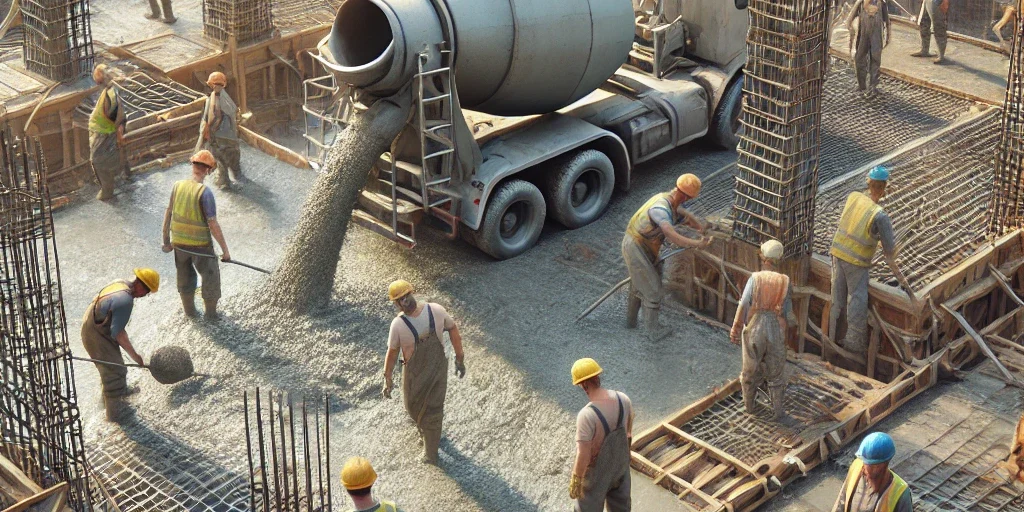The construction industry is one of the sectors where machinery and equipment are most frequently rented. The industry employs earth-moving machines, machinery for lifting materials and people. And a wide range of construction equipment. One segment of the construction industry concerns building in the strict sense. In this article, we will focus on concrete processing, looking at the most used machines and their functions.
The Phases of Concrete Processing
When talking about construction, one quite directly thinks of the building phases in which foundations are laid, and the skeleton of a building is created. The construction material par excellence for these activities is concrete, an artificial conglomerate composed of a mixture of binders and water. To which sand and gravel parts are added.
The first phase of concrete processing is the mix design, which varies depending on the characteristics the conglomerate should have. The actual processing of concrete is called “preparation.” It can be carried out at a specialized plant or directly on the construction site. This is followed by transport to the point where it is to be poured. And subsequently the injection of concrete into special equipment that will give the structure its shape.
The concrete must then harden to transition from a fluid to a rigid state. This process is technically called “curing.”
Plants for Concrete Processing
Among the most used machines for concrete processing are preparation plants. These can be found at specialized facilities or installed directly on the construction site. The relevant regulations stipulate that this type of plant must be certified by a third party. Attesting that the concrete meets the requirements of the Technical Standards for Construction.
The preparation plant consists of three mobile elements that can be easily transported, assembled, and installed on site. The heart of the entire plant is the mixing unit, which allows large quantities of concrete to be mixed. These are stored in the storage and dosing unit. This large, galvanized tank collects the freshly produced concrete until the concrete mixer is positioned.
The elements connecting the two units are two conveyor belts. The first is loaded using site shovels and transports the raw materials to the mixer unit. A second conveyor belt transports the concrete to the storage unit.
The Most Commonly Used Machines for Concrete Processing
Concrete mixers, or truck mixers, are the machines for concrete processing that handle its transport from the plant to the pouring point.
The Drum
These special wheeled machines are equipped with a large cylinder, called a drum. It rotates constantly, promoting the mixing of the concrete and preventing its partial solidification. Upon reaching the pouring point, the drum of the concrete mixer is rotated in the opposite direction.
The Arms
This way, the concrete is directed into a metal channel called a distribution arm. Through these arms, the concrete can be distributed on the ground to perform a linear pour. When, instead, the supporting structure of a building needs to be constructed, an injection pump is used. These concrete processing machines are also equipped with wheels and can move autonomously around the construction site.
A pumping unit in the machine body allows the concrete to move inside the pipes that extend along the articulated arm.
The arm can reach considerable heights, depending on the model, so that the concrete is pumped and injected into the formwork that gives the structure its shape. Metal structures can be positioned inside these provisional structures, which together with the conglomerate form reinforced concrete, commonly known as reinforced cement.
Our Conclusions
The actual construction phase presupposes the creation of foundations and structures, during which specific machines for concrete processing are necessary. These include preparation plants, concrete mixers, and injection pumps. There are companies specialized in renting this type of machinery, as it is a rather particular segment of the construction industry.
Indeed, by resorting to rental, you can choose the most suitable machine based on the characteristics of the construction and be supported by an expert throughout the rental period. Don’t hesitate to visit our website to see which machines you can rent from us.






